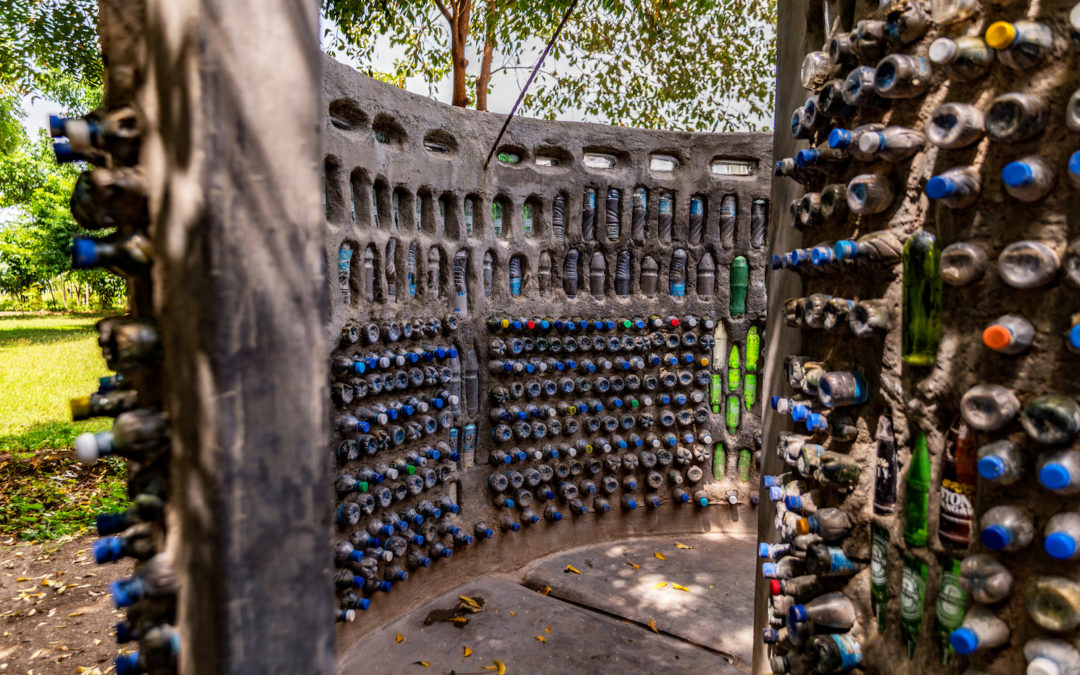This article was originally published on GreenBiz.com
Upon first glance, most agricultural wastes (or agro-wastes) appear to have little redeeming value beyond the original processes; after all, what useful purpose could materials such as manure, leaf litter and crop residues possibly provide?
However, these materials are helping to define an increasingly crucial facet of environmentalism: Sustainable construction.
For decades, the construction industry has been notoriously detrimental to the environment — both in its production of multiple pollutants and its physical encroachment on natural ecosystems. What’s more, longstanding construction materials such as concrete remain an industry standard despite their crippling environmental impact.
These factors, in tandem with the depletion of the natural resources used to create such materials, have spawned a full-fledged environmental crisis within one of our cornerstone industries.
This is where agro-waste comes into play. Once overlooked as disposable, these wastes have revealed their unlikely potential as alternative building materials, and their implementation is already being explored globally.
Innovating the industry
The use of agro-wastes in construction is stimulating a long-stagnant industry towards a greener future — and its vast implications are a direct byproduct of the varied and cast forms of agro-waste. Although the application of sustainable materials is growing, construction is still a blank slate for sustainable experimentation. Every type of agro-waste creates a different set of possibilities and subsequent environmental benefits.
Recycling is nothing new but is an important part of agro-waste’s green potential. A 2018 study noted that agro-wastes are an eco-friendly means of manufacturing “biofuels, enzymes, vitamins, antioxidants, animal feed, antibiotics and other chemicals.” This same study observed that many agro-industrial wastes are “untreated and underutilized, therefore … [they were] disposed of either by burning, dumping or unplanned landfilling,” which contributes to climate change by increasing greenhouse gases.
In construction, an equally emissions-heavy sector, agro-wastes serve as a two-pronged remedy: They stand to make the formation and implementation of construction materials more organic and sustainable while merely using them simultaneously helps reduce landfill issues.
A 2020 study explored the application of agro-waste in developing “brick and masonry elements, green concrete, insulation materials for buildings, reinforcement materials for buildings, particleboards and bio-based plastics.” The study found that when integrating agro-wastes such as sugarcane bagasse, rice husks and groundnut shells into construction processes, using the wastes improved the construction materials by enhancing their sustainability properties, boosting their durability and ultimately reducing costs.
Agro-waste stands to make the formation and implementation of construction materials more organic and sustainable while merely using them simultaneously helps reduce landfill issues.
Industry innovators are getting creative with how they leverage these advantages. Indian architect Shriti Pandey recently used agro-waste to construct two COVID-19 care facilities in Bihar and Punjab. The facilities were built of stubble (or leftover pieces of harvested grain) and are fire-proof, solar-powered and “inherently thermally insulated.” What’s more, zero water was used during the construction process — 60 percent of which took place off-site.
Pandey’s efforts reinforce the multifaceted benefit of agro-waste construction; the project was cost-effective, non-environmentally intrusive and stable in terms of its physical durability and longevity — not to mention it aided areas with a rising demand for hospital beds amidst the pandemic. In this case, a positive change was made for constructors, environmentalists and community members alike.
Maintaining momentum
The advent of agro-waste repurposing comes alongside other key sustainable construction innovations that can help agro-waste continue its momentum and create a permanent change for the industry.
For example, advancements in construction-focused 3D printing offer an exciting new medium through which agro-waste materials can take on new shapes. Seven agro-waste-comprised houses already have been 3D printed around the world, each sporting a different architecture. The homes, which range from dome-shaped to cylindrical, were constructed of bioplastics, soil, straw and rice husks.
Yet, the wider implementation of these processes will be contingent upon their international acceptance — something that could take time to establish.
“It is essential to notice that there will not be enough confidence in agro waste-based construction products’ sustainability until any legislative instrument supports and promotes it,” wrote Richa Singh in DownToEarth. “The construction industry needs to be educated to enhance the application of these products. There has to be a focused mission-mode approach to setting up the market for green construction products.”
Fortunately, despite the inevitable truth in Singh’s assessment, preemptive innovations such as that of Shriti Pandey represent an underlying eagerness to make agro-waste a new norm in construction. Even though broader systemic change may be years away, the industry’s sustainable destiny is becoming increasingly difficult to ignore.

